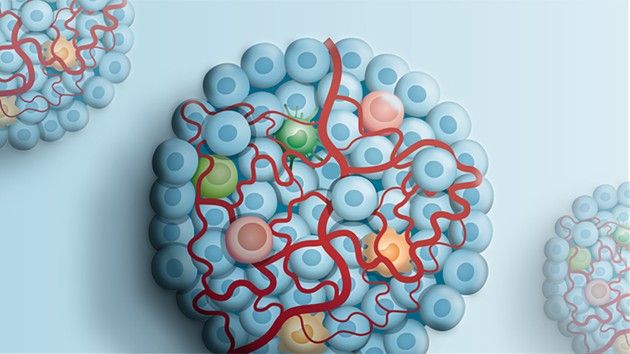Collection |
Collections
Filters
-
Collection Type
-
-
Collection |
 World Cancer Day 2021
World Cancer Day 2021
In honour of World Cancer Day, a global initiative that seeks to unite the effort to fight cancer, our editors have selected some of our research highlights in cancer research from the last year to reflect on this ongoing journey. We contemplate the many emerging techniques that are furthering our understanding to improve the diagnosis, treatment and prevention processes, and look forward to another year of exciting developments.
Image: Adapted from Granado-Martínez et al. 2020, doi: 10.1038/s42003-020-1092-0 -
Collection |
 Nobel Prize in Chemistry 2020
Nobel Prize in Chemistry 2020
The 2020 Nobel Prize in Chemistry has been awarded to Emmanuelle Charpentier and Jennifer Doudna for their pioneering work in gene-editing.
Image: Springer Nature/The Nobel Foundation/Imagesource -
Collection |
 Stem cells from development to the clinic
Stem cells from development to the clinic
New technologies to study stem cells have increased our knowledge about their physiological roles and contributions to development, ageing, regeneration and disease. This collection showcases research articles, reviews and protocols from across the Nature journals to highlight the striking advances made in basic and translational stem cell research.
Image: Benedetta Artegiani and Delilah Hendriks, Hubrecht Institute, Utrecht, The Netherlands. -
Collection |
 World Oceans Day 2020
World Oceans Day 2020
On this year's World Oceans Day, we reflect upon the oceans that connect us all and the many challenges they face today. To celebrate the currents propelling us toward conservation action, our editors have rounded up a collection of the ocean-related articles at Communications Biology. For more information about World Oceans Day please visit these resources here and here.
Image: EliasSch / Pixabay -
Collection |
 Stress
Stress
Stress affects all forms of life and can often feel like a common presence for us. For this month's collection our editors have selected articles from Communications Biology that describe how life — from the cellular to the population level — reacts and adapts to stressors of different forms and in diverse systems.
Image: pixabay -
Collection |
 Communications Biology 2 year anniversary collection
Communications Biology 2 year anniversary collection
-
Collection |
 Spotlight on Early Career Researchers
Spotlight on Early Career Researchers
Communications Biology have published a series of interviews with early career researchers in which they talk about their research and experiences.
-
Collection |
 Cartilage repair and regeneration
Cartilage repair and regeneration
This Collection of articles from several Nature journals covers the latest advances in our understanding of cartilage as a tissue, as well as insights into cartilage repair and potential regeneration strategies.
Image: Springer Nature Limited/YAY Media AS/Alamy -
Collection |
 Rare Cancers Collection
Rare Cancers Collection
This collection from the cancer editorial community at Nature Research journals focuses on highlighting work on rare cancers, from preclinical basic research to translational and clinical research.
Image: Simon Bradbrook/Springer Nature Limited -
Collection |
 Communications Biology first year anniversary collection
Communications Biology first year anniversary collection
Communications Biology published its first articles on January 22, 2018. In this collection, our in-house editors highlight some of their favorite papers from our first year of publishing. This collection also includes all Review and Comment articles published during our first year. To celebrate some of our featured articles, we have also commissioned 'After the Paper' Comment articles from a few of our authors. These will be added to the collection as they are published. Finally, we link to all 'Behind the Paper' posts published by our authors on some of the Nature Research community sites.
-
Collection |
 UK Biobank
UK Biobank
The UK Biobank is a prospective cohort study with deep genetic, physical and health data collected on ~500,000 individuals from 2006-2010 across the United Kingdom. This unprecedented open access genetic database has enabled large scale studies on genetic and epidemiological associations for a broad range of health related traits. The UK Biobank has made their datasets and research results accessible to researchers as an open access resource to benefit public health.
Image: Kelly Krause, Nature

 Earth Day 2021
Earth Day 2021